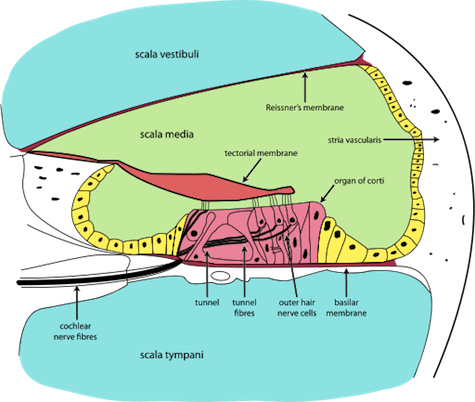 Intelligent Design
Intelligent Design
Mammalian Ear Has “Extraordinary Features”

Three recent papers underscore the precision of parts in the cochlea, from its coiled shape and membranes to the individual hair cells and proteins that make hearing possible.
An open-access paper in PNAS by Nin, Reichenbach, Fisher and Hudspeth examines the motility of the bundles of hair cells inside the cochlea that transduce mechanical energy into electrical energy. Their opening page expresses the exquisite performance of the mammalian ear:
The sense of hearing excels in several ways. Human hearing spans the enormous frequency range from 20 Hz to 20 kHz, yet we can distinguish frequencies that are only 0.2% apart. This interval is well below a semitone in Western music, which represents about 6% in frequency. Moreover, humans can perceive trillionfold differences in sound intensity, yet the faintest detectable sounds vibrate the tympanic membrane by only 10 pm [picometers, or trillionths of a meter]. These extraordinary features ensue from an active process that provides tuned mechanical amplification of weak signals in the mammalian cochlea. (Emphasis added.)
The researchers manipulated hair cells in chinchilla cochleas and observed the response with scanning laser interferometry. They pointed out that amplification is dynamic and nonlinear, permitting mammals to hear weak sounds but not be overcome by loud sounds:
Near the peak of a traveling wave, the active process of a healthy cochlea strongly amplifies weak inputs but provides progressively less enhancement of stronger signals. This level-dependent amplification underlies the cochlea’s signature compressive nonlinearity.
Another open-access paper, in PLoS ONE, examines the electrical properties that give rise to amplification in the cochlea. In “Optimal Electrical Properties of Outer Hair Cells Ensure Cochlear Amplification,” Nam and Fettiplace describe how the complex geometry and shape of outer hair cells provide amplification of signal for the inner hair cells:
The organ of Corti (OC) is the auditory epithelium of the mammalian cochlea comprising sensory hair cells and supporting cells riding on the basilar membrane. The outer hair cells (OHCs) are cellular actuators that amplify small sound-induced vibrations for transmission to the inner hair cells.
They found that the specific lengths of OHCs, combined with the action of an essential protein named prestin, produce a 90-degree phase difference between top and bottom that provides optimal amplification. “We conclude that the components of OHC forward and reverse transduction are crucial for setting the phase relations needed for amplification,” they said.
In a third recent paper, this one in Nature, Sotomayer et al. looked even more deeply at the action in inner hair cells. In “Structure of a force-conveying cadherin bond essential for inner-ear mechanotransduction,” they explain the mechanics of hair cell bundles:
Hair-cell mechanotransduction occurs within each bundle of stereocilia … that is deflected by mechanical stimulation. Deflection results in tension applied to tip links, protein filaments linking the tip of each stereocilium to its tallest neighbour. The tip links, acting in series with an elastic ‘gating spring’, pull open transduction channels.
The transduction channels are where mechanical-to-electrical energy transfer occurs; that’s where calcium ions flow into the auditory nerves, setting up electrical impulses.
The tip links need to bind securely to the neighboring hair cells. Otherwise, deafness can result. The researchers found a remarkable pair of cadherin proteins with a novel “extended handshake” mechanism that locks adjacent hair cells together at these tip links (see video animation of the force needed to pull them apart). The proteins works something like two people grasping forearms and hands in a tight grip. The grip is predicted to be “mechanically stronger than required to resist forces produced by moderate sound.”
These are just a few examples of exquisite fine-tuning in the cochlea, consisting of multiple parts working together for function. Not surprisingly, none of the three papers mentioned Darwinian evolution or natural selection.
Image credit: Cross section of the cochlea/Wikipedia.
